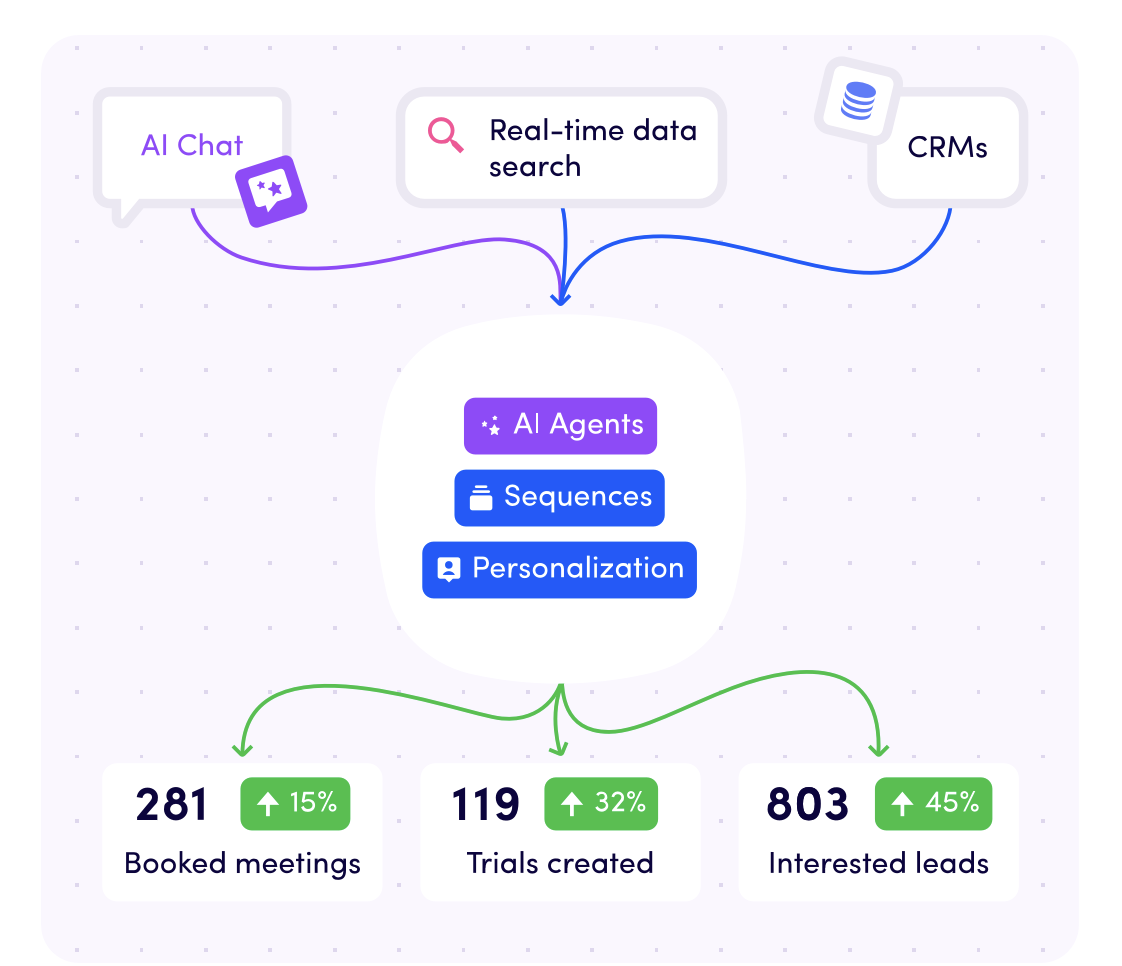Building a culture of experimentation for business growth

A company that embraces experimentation is like a surfer riding the waves of change, effortlessly adjusting their stance with every swell and dip. They’re not waiting for the storm to pass; they’re riding it to reach new shores.
Ready to take your business to the next level?
Welcoming a culture of experimentation is what you've been looking for!
Think of it as surfing the waves of change—adjusting with every swell and dip, not waiting for the storm to pass.
This isn’t just about testing new ideas!
It’s about transforming your approach, seizing opportunities, and pushing the boundaries.
Dive into this article to discover how to make experimentation a core part of your strategy, and watch as it drives your growth and keeps you ahead of the competition.
Let’s get started!
In this article, we'll discuss:
- What Prevents Companies from Testing More?
- The Benefits of Experimentation
- How to Incorporate a Culture of Experimentation:
- Step 1: Define Clear Strategic Goals
- Step 2: Empower Teams with Data-Driven Decision-Making
- Step 3: Define Your Experimental Workflow
- Step 4: Encourage Cross-Functional Collaboration
- Step 5: Create a Safe-to-Fail Environment
- Step 6: Testing, Testing, Testing!
- Step 7: Iterate, Iterate, and... Iterate?
- Step 8: Measure Success and Scale
- Conclusion
What prevents companies from testing more?

The answer?
It’s your company culture!
When you’re looking to level up, it’s not the tech or tools that hold you back.
It’s the beliefs, worldviews, and values.
A lot of businesses play it safe with new ideas.
They hold back on experimenting, which leads to overthinking and pressure that can stifle creativity.
That’s when you miss out on those innovative solutions, even if it means taking a few risks.
And remember what Mat Hunte said-
"That sense of trying, experiencing errors, learning from these, and making improvements is innovation."
What are the benefits of experimentation?
Think of experimentation as your secret weapon for sky-high success.
When you embrace it, you’re unlocking tremendous growth potential and boosting your business success rate.
It's not only about making data-driven decisions.
It’s about seizing opportunities and sparking innovation!
Every experiment, whether it’s a triumph or a lesson, propels your business forward.
Remember, with each test, you’re not just keeping up—you’re leading the way.
How to Incorporate a Culture of Experimentation?

Building a culture of experimentation in your organisation means more than just starting new projects and crossing your fingers.
It’s about creating a system that boosts creativity, accepts failure, and values learning.
So, you are probably already wondering how to develop your experimentation strategy.
Here’s how to make experimentation a key part of your business:

Step 1: Define Clear Strategic Goals

To build an experimentation mindset, start with a simple yet powerful shift: move from fearing failure to loving learning.
Imagine this: every experiment, win or lose, is a golden opportunity to gain insights.
Embrace the uncertainty and let each attempt be a chance to grow!
For commercial leaders, it all starts with you.
Remember, leaders create the right mindset.
They are influencers on their team's mind—don't underestimate it!
Leaders foster innovation across the board by prioritising a culture that values learning from failure.
That's how leadership decisions impact the success of experiments!
These decisions include setting clear goals.
That also involves making a space that welcomes risks.
Keep in mind that encouraging a test-and-learn mindset is important!
A great example of this is how Sebastian Siemiatkowski, the CEO of Klarna, supported data-driven choices. He empowered his team to try out new financial solutions.
By leveraging data insights, Klarna was able to develop features like “Pay Later,” which revolutionised the online shopping experience for consumers.
This not only boosted customer satisfaction but also increased conversion rates for merchants using Klarna’s platform.
This example should teach one thing...
Be open to fresh ideas—whether it’s a new marketing strategy, product tweak, or process update.
When you’re open to experimenting, you’ll inspire your team to take risks and think outside the box.
Step 2: Empower Teams with Data-Driven Decision-Making

Want to boost your company's success?
Start by choosing the right tools!
They simplify complex tasks and make your work easier.
Take HubSpot, for instance.
Its tools supercharge marketing and sales automation.
Businesses can optimise customer engagement and drive growth like never before!
With HubSpot, automating lead rotation and follow-ups is a breeze.
This frees up your team to focus on what really matters—the strategy!
According to a HubSpot whitepaper, companies saw a return on investment in just 4 months and a 505% ROI after three years!
Remember to create an experimental culture driven by insights, not the third eye!
Are you ready to dive deep into the world of analytics and boost your decision-making game?
If you’re eager to boost your team’s data prowess, check out the Growth Tribe Marketing Certification course!
It is full of useful tips on using analytics for better decision-making!
Step 3: Define Your Experimental Workflow

Do you want to encourage everyone to help with trying out new things and improving them?
Ensure they all know the rules!
Think about:
How do they start a test?
Do they need to get help from a special team, or can they do it on their own?
Do they need extra tools or help from other people? If so, where should they get it from?
For that, before launching experiments, clearly define your workflow.
What does your experimentation process look like?
Here’s the deal:
Start by planning your test and forming a solid hypothesis.
What are you testing, and why do you think it’ll work?
Next, set up your success metrics and figure out how many experiments you’ll run.
Make sure you’ve got a clear plan to track progress, document results, and tweak things based on what you learn.
A good workflow helps everyone stay aligned.
It ensures your experiments are actionable, measurable, and ready to grow.
Keep it simple and focused!
Step 4: Encourage Cross-Functional Collaboration

Let's open the doors to experimentation for everyone!
A core experimentation squad is a must-have.
But make sure to get different teams to work together to make it part of your culture.
Picture this: your marketing crew joins forces with the product team to fine-tune customer messaging.
Or collaborate with sales to adjust pitches and close deals faster.
How cool would that be?
A great example is Amazon!
They get teams from different departments to work together on improving the customer experience.
Whether it’s tweaking the website design or streamlining delivery, they’re always testing something!
These constant experiments help them keep customers happy and coming back for more.
They're able to stay ahead in keeping customers happy by using insights from different teams.nt teams. nt teams. nt teams. nt teams. satisfaction and retention
Team-up! That will make your experiments shine brighter.
Step 5: Create a Safe-to-Fail Environment

No worries if some experiments fail. That's okay!
So what is the key to successful experimentation?
It’s all about creating a space that embraces failure!
Think of failure as a step towards progress, not a punishment.
Make sure your team feels safe to try out new ideas, knowing that a failed experiment can teach as much as a successful one.
And here’s the kicker—leadership plays a huge role in this!
Celebrate your wins, but also give a shoutout to the lessons learnt from those failed attempts.
By dropping the stigma around failure, you’ll spark more creative and innovative thinking.
Step 6: Testing, Testing, Testing!

"The biggest risk is not taking any risk. In a rapidly changing world, the only strategy that is guaranteed to fail is not taking risks."
-said Mark Zuckerberg
Difficult to disagree, right?
Relentless testing is the heartbeat of a strong experimentation culture.
Once you’ve defined your goals, workflow, and tools, the next step is to put them to the test.
Testing should be a constant, iterative process that informs your decision-making at every stage.
So how do you take a risk and test your boldest ideas?
Start with A/B testing!
Imagine you’ve got two catchy headlines for your webpage, and you want to find out which one grabs more attention.
So, you show each headline to different people and see which one gets the most clicks.
That is what A/B testing is.
But why use it?
It’s like having a superpower for your business!
It shows you what clicks with your audience.
Also, it boosts engagement and sales, speeds up testing, and cuts down on errors.
Simply put, that's how you can find out what your target audience actually wants.
Take Netflix, for example. They constantly use A/B testing to improve their user experience!
Netflix often tests different things, like where to place the play button or what recommendations to show.
That's how they discover what viewers like best!
This method helps them personalise experiences, keeping millions of users engaged.
But is it all?
Do not forget to test your messaging, pricing models, and even customer support processes!
The key here is frequency: the more you test, the more insights you’ll gather.
Don’t stop at one test—refine and tweak with each round!
Testing and learning help you discover breakthroughs and boost growth.
And remember, every test brings you a step closer to hitting the jackpot!
Step 7: Iterate, Iterate, and... Iterate?

You thought that's it?
Not at all!
Once an experiment is complete, the work doesn’t stop.
You should always analyse the results, learn from them, and iterate.
Continuous improvement is the secret sauce to fostering business processes!
Innovative companies never stop experimenting—they refine, optimise, and scale what works while improving what doesn’t.
Hold regular check-ins where teams can share what they’ve found.
Celebrate the wins and chat about how to change things for even better results.
That's how experimentation will drive your growth!
Step 8: Measure Success and Scale

As your culture of experimentation matures, keep track of your wins and their impact on the business.
What kind of results are you seeing?
Is there an uptick in revenue, customer conversion rate, or operational efficiency?
Measuring results is a game-changer!
It helps you share those successful experiments with the entire team.
Plus, who doesn't love a good win?
Set up an easy way to track your KPIs and make sure everyone hears about the victories.
When people see how a test-and-learn approach works, they’ll be all in.
And let’s be real, popping a bottle of champagne to celebrate doesn’t hurt either!
It's not just about small wins—experiments can lead to millions of new customers or solutions you never saw coming.
Cheers to that!
Conclusion
Creating a culture of experimentation is not just a trend.
It is a smart advantage in today’s fast-changing business world.
Businesses that cultivate this mindset will find themselves better equipped to innovate, grow, and stay competitive.
By embracing a structured, data-driven approach to experimentation, you’ll push your business ahead, leave competitors in the dust, and uncover exciting new opportunities.
So, are you ready to kickstart a culture of experimentation in your business?
Then let’s make it happen!
Want to learn more about digital marketing?
You're in the right place! In today's dynamic landscape, digital marketing is more crucial than ever.
Whether you're aiming to boost your brand’s online presence or drive more conversions, mastering digital marketing strategies is key.
This comprehensive course will equip you with the skills to craft compelling messages and leverage data to optimise your digital campaigns.
6 modules | 61 lessons | 23 videos | 6 tests | 6 exercises
- Module 1: Introduction to Digital Marketing
- Module 2: Digital Marketing Tracking and Analytics
- Module 3: Boost Organic Growth with Content Marketing Strategies
- Module 4: Target Your Audience Using Paid Media
- Module 5: Retarget Your Audience Effectively
- Module 6: Optimise Your Landing Pages
FAQ
1. What’s the first step in creating a culture of experimentation?
Kick-off by defining clear strategic goals. Start by shifting your mindset from fearing failure to embracing learning opportunities. Each experiment, whether successful or not, is a chance to gain valuable insights. Leaders should set the tone by fostering an environment where experimenting is encouraged and celebrated.
2. How can we empower our teams with data-driven decision-making?
Equip your teams with the right tools and data. Tools like HubSpot can streamline tasks and offer deep insights, enabling smarter decisions. Focus on leveraging analytics to drive your strategies, and don’t forget to upskill your team with courses like Growth Tribe’s Marketing Certification to enhance their data prowess.
3. What’s the best way to define and manage an experimental workflow?
Create a clear, simple workflow for your experiments. Outline how tests are initiated, what tools or support are needed, and how results will be tracked. Planning and documenting each step ensures that experiments are actionable, measurable, and aligned with your goals.
4. Why is cross-functional collaboration important in experimentation?
Collaboration across different teams brings diverse perspectives and expertise, enriching the experimentation process. For example, having marketing, product, and sales teams work together can lead to more holistic and effective tests. This teamwork fosters innovation and keeps the customer experience at the forefront of your experiments.
5. How do we handle failures in experiments?
Embrace failure as a part of the learning process. Creating a safe-to-fail environment means celebrating lessons learned from unsuccessful experiments just as much as successes. This mindset encourages more creative and bold testing, knowing that failure is a stepping stone to innovation and growth.
Feel ready to dive into the waves of experimentation? Remember, the more you test, the more insights you gain. Keep iterating, measuring success, and celebrating each step of the journey!
Categories
- Business & Innovation (83)
- Growth & Marketing (72)
- Artificial Intelligence (53)
- Data & Analytics (16)
- Case studies (10)
- Project Management (10)
Related articles
Latest articles
AI in Finance: Why You Need It Now
Imagine a world where loans are approved in seconds. Sounds...
ChatGPT Search Unveiled: Should You Make The Switch Now?
Picture this: You’re no longer just “searching” the web—you’re...
Shadow AI Explained: How to Harness Hidden AI Without the Risks
Picture this: your team is under pressure to deliver results—fast....
The 33 best AI tools for commercial teams
The tools are split into 2 categories The best AI tools for your...

















